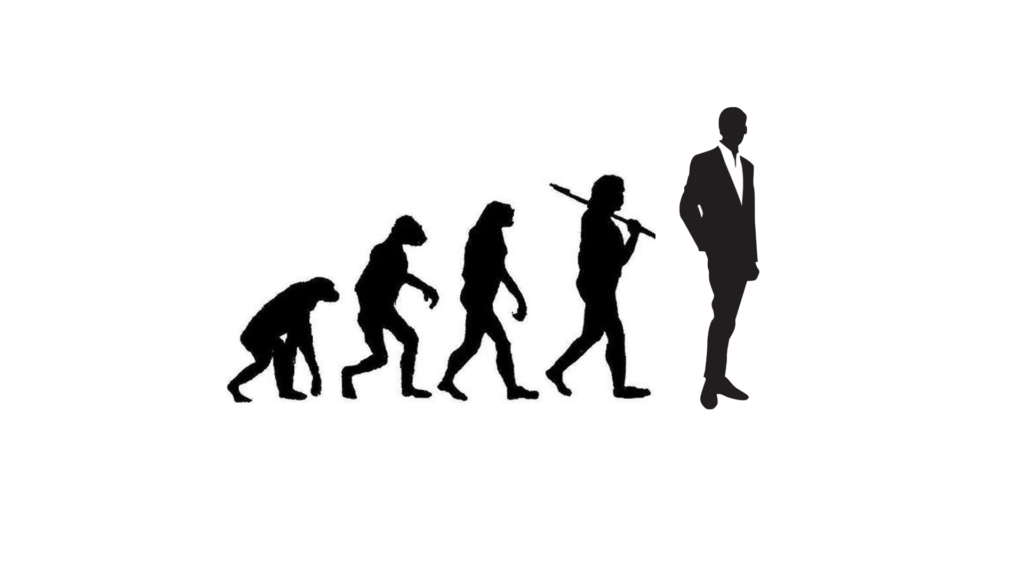Evolution of Men’s Fashion: A Biological Perspective

Fashion has always been more than just a way to cover the body. It’s a silent yet powerful language that communicates identity, status, and purpose. When we examine the evolution of men’s fashion through the lens of biology, we uncover fascinating connections between human survival instincts, reproduction, and societal advancement. Let’s dive into how biology has influenced the history and progression of men’s fashion.
Survival and Practicality: The Roots of Fashion
In the earliest days of humanity, clothing served a purely practical purpose. Men’s garments were crafted to protect against harsh environmental elements. Animal skins and furs were the primary materials, chosen for their insulating properties to maintain body heat—a biological necessity for survival in colder climates. Over time, these practical choices became symbolic of status and skill. A hunter adorned in the pelt of a dangerous predator, for instance, communicated strength and competence, traits biologically attractive to potential mates and revered within tribes.
As humans migrated to different regions, local climates and environments began to shape the materials and designs of men’s clothing. Breathable fabrics like linen became popular in hot, arid regions, while wool dominated colder areas. These adaptations highlight how men’s fashion was intricately tied to biology’s demand for comfort and survival.
Signaling Status: Fashion and Sexual Selection
Beyond survival, clothing began to play a role in sexual selection. Just as peacocks use their elaborate tails to attract mates, human males have historically used fashion to signal status, resources, and fitness—qualities that are biologically attractive.
In ancient Egypt, for example, men’s clothing often featured fine linen, gold jewelry, and elaborate headdresses to signify wealth and power. Similarly, in medieval Europe, sumptuary laws regulated which fabrics and colors men of different social standings could wear. The ability to don luxurious materials like silk or vibrant dyes like purple became a visual shorthand for influence and success.
This biological drive to stand out and demonstrate dominance persists today. Modern men’s fashion often emphasizes tailored suits, luxury watches, and high-end footwear, which subtly signal financial stability and personal ambition—traits still biologically linked to reproductive success.
Functionality Meets Form: The Industrial Revolution
The Industrial Revolution marked a turning point in men’s fashion. Mass production made clothing more accessible, but it also demanded a shift toward functionality. For working men, biology’s demand for movement and efficiency dictated the design of durable, practical garments such as denim jeans and sturdy boots. Meanwhile, for those in professional settings, tailored suits became the standard, balancing formality with comfort—a nod to the biological need for unrestricted mobility.
This era also saw the rise of uniforms, which biologically catered to humans’ innate need for belonging and identity within a group. Military uniforms, for instance, became symbols of unity and strength, appealing to both social cohesion and hierarchical signaling.
The Modern Era: Self-Expression and Adaptability
Today, men’s fashion reflects an unprecedented fusion of individuality and adaptability, often influenced by biological factors such as body type, skin tone, and personal comfort. Advances in textile technology have led to the creation of fabrics that respond to biological needs, such as moisture-wicking materials for athletes or temperature-regulating smart fabrics.
At the same time, modern fashion trends often emphasize features that align with biological principles. Slim-fit clothing, for instance, highlights muscular physiques, while bold patterns and colors draw attention to confidence and individuality—traits that are biologically linked to mate selection and social standing.
Moreover, the rise of sustainable fashion mirrors a growing awareness of the biological impact of our choices on the planet. Men increasingly gravitate toward eco-friendly materials like organic cotton and recycled fibers, aligning their fashion with a biologically driven need to preserve resources for future generations.
Biological Roots of Timeless Trends
Certain elements of men’s fashion have remained consistent throughout history, rooted in deep biological instincts.
- The Suit: Universally recognized as a symbol of power and elegance, the suit’s structured shoulders and fitted waist mimic the V-shaped torso, a biological marker of strength and vitality.
- The Hat: From helmets to fedoras, headwear has long served both practical and symbolic purposes. It protects against environmental elements while also drawing attention to the face, a key focal point in human interaction.
- The Watch: Beyond functionality, the wristwatch has become a symbol of precision and responsibility, traits biologically linked to reliability and trustworthiness.
The Future of Men’s Fashion and Biology
As we look to the future, men’s fashion will likely continue to integrate biological insights. Wearable technology, such as fitness-tracking smartwatches and temperature-regulating jackets, is already bridging the gap between fashion and physiology. Additionally, the rise of personalized fashion, driven by AI and body scanning technology, ensures that clothing fits an individual’s unique biological and anatomical needs.
Biology will also influence broader trends, such as the shift toward inclusive and adaptive clothing. Designs that accommodate diverse body types, physical abilities, and personal needs reflect a deeper understanding of human variability and the biological imperative for comfort and function.
Conclusion
The evolution of men’s fashion is a testament to humanity’s ability to adapt, innovate, and express identity. From the primal need for protection to the sophisticated art of signaling status and individuality, men’s clothing has always been intertwined with biology. As we continue to merge fashion with science and technology, men’s style will undoubtedly evolve in ways that not only reflect but also enhance our understanding of the human body and its needs.








